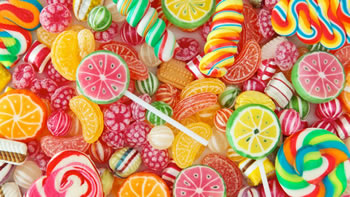
While food accounts for a large portion of the added sugar in our diet, many experts recommend cutting back on sugary beverages to reduce daily intake. Consumption of sugary drinks might lead to an estimated 184,000 adult deaths each year worldwide, according to research published in the journal Circulation, an update of a 2013 American Heart Association conference presentation. In the following slides, we compare the amount of sugar found in some of America’s top-selling beverages — according to Beverage Industry magazine’s 2013 State of the Industry Report — to the sugar found in common sugary snacks.
Children 2 to 18 should consume no more than about six teaspoons of added sugars in their daily diets, according to new recommendations from the American Heart Association.
Researchers called limiting a child’s added sugar consumption to six teaspoons — equivalent to about 100 calories or 25 grams — “an important public health target” in a paper published in the journal Circulation on Monday. The paper outlines the new recommendations.
“A diet high in added sugars is strongly associated with weight gain, obesity, insulin resistance, abnormal cholesterol and fatty liver disease in children and all of these increase future cardiovascular risk,” said Dr. Miriam Vos, an associate professor of pediatrics at Emory University and Children’s Healthcare of Atlanta and lead author of the paper.
“I hope that this statement helps parents and organizations that help care for children by providing an achievable goal,” she said. “How much sugar is OK for kids has been a confusing issue for parents, and this statement provides a target that parents can understand, and that will make a huge difference for the health of children.”
The researchers reviewed and analyzed more than 100 previous papers and studies on the cardiovascular health effects of added sugars on children published through November.
They also analyzed dietary data from the National Health and Nutrition Examination Survey on how much added sugar was consumed in the United States from 2009 to 2012.
he researchers concluded that children are currently consuming more than the newly recommended 25-grams-or-less of added sugars daily, on average.
The latest national dietary guidelines released by the Office of Disease Prevention and Health Promotion recommends limiting sweets so that added sugar makes up 10% or less of your daily calories.
That amount is “closely aligned with the new recommendations,” Vos said. “The AHA statement provides a fixed amount, 25 grams, that is less than 10% of calories for most children and is easier for parents to understand.”
Understanding added sugar
What counts as added sugars? Any table sugar, fructose or honey used as an ingredient in processing and preparing foods or beverages, eaten separately or added to a meal at the dining table. Some foods that contain added sugars are soft drinks, candy, cookies, cakes, ice cream and pies.
“A plain whole grain bagel with cream cheese can have no added sugar, while a frosted doughnut has 23 grams of added sugar,” Vos said. “A bowl of cereal can range from 1 gram to 12 or more grams, depending on the brand. One soda typically has 33 grams. A healthy breakfast of a low added-sugar, whole-grain cereal with a piece of fruit and a glass of low-fat milk would have about 1 gram of added sugar [but] varies by the cereal.”
If the six-teaspoon recommendation becomes difficult to follow, that’s because many processed foods in the supermarket are engineered to be high-sugar and low-fiber, said Dr. Robert Lustig, professor of pediatrics at the University of California, San Francisco, who was not involved in the new paper.
“We now have the data to show that sugar is different from starch, unrelated to its calories, and is causative for four diseases: type 2 diabetes, heart disease, fatty liver disease and tooth decay,” he said. “It’s like alcohol but for kids. … It activates the brain’s reward center to make you consume more.”
The new paper not only provides a comprehensive review of the current data, it reveals “profound” and “deeply disturbing” links between the amount of added sugars American children consume and their risk of heart diseases, said Dr. Sanjay Basu, an assistant professor of medicine at Stanford University, who was not involved in the paper.
“I am very concerned, as a parent, that my child shouldn’t be consuming as much added sugar as I did as a child,” he said, “and this AHA statement goes a long way toward helping parents like me understand the implications of what I give to my child to eat.”
Source: http://edition.cnn.com/2016/08/23/health/sugar-kids-recommendations/index.html


